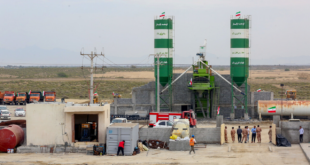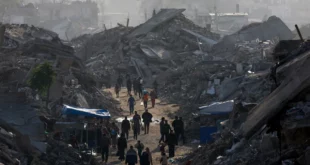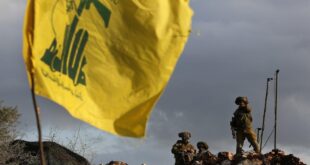 It seems like only yesterday that scenes of destruction combined with rumors of atrocities and illegal weapons use by Russian troops against the Chechnyan people were all over the evening news.Nowadays, one hears very little about this anti-colonial struggle unless it has to do with some hostage taking event that usually ends up resulting in the deaths of hundreds. This silence is not because the Chechnyan guerrillas have given up their hope for independence, nor is it because the movement has been completely destroyed by Russian aggression. Instead, according to Tony Wood’s recent book Chechnya: The Case for Independence (Verso 2007), it is due to the complicity of Western powers and Moscow in silencing the movement via guns, bombs and silence.
It seems like only yesterday that scenes of destruction combined with rumors of atrocities and illegal weapons use by Russian troops against the Chechnyan people were all over the evening news.Nowadays, one hears very little about this anti-colonial struggle unless it has to do with some hostage taking event that usually ends up resulting in the deaths of hundreds. This silence is not because the Chechnyan guerrillas have given up their hope for independence, nor is it because the movement has been completely destroyed by Russian aggression. Instead, according to Tony Wood’s recent book Chechnya: The Case for Independence (Verso 2007), it is due to the complicity of Western powers and Moscow in silencing the movement via guns, bombs and silence.
Wood’s text is a concise and thorough examination of the Chechnyan independence movement. He opens the book with a history of the Chechnyans, their fellow Caucasians and the relationship of these groups with Moscow over the past several hundred years. It continues by examining the history of the Soviet Union to Chechnya, the relationship between different ethnic groups in the Caucasus region, the rise of the independence movement in the late 1980s, its genesis into armed rebellion and the role played by Islamists. The history described is one of brutality, repression, cultural integrity, mass deportations and brutal war. It is also a history that provides more than enough evidence of the Chechnyan right to a sovereign nation.
Once Wood establishes the history of the region and its people, he delves into the nature of the current conflict. Reviewing the outbreak of open warfare after the breakup of the Soviet Union and the rise to power of Boris Yeltsin, Wood’s narrative vividly recreates the destruction and death wrought by Russian carpet bombing and chemical weapons use that ravaged the city of Grozny and the countryside that surrounds the city. He explains the moves by Russia to legitimize their actions by staging fraudulent elections that allowed occupying Russian soldiers to vote and he explains the nature of the resistance and the reasons for its dependence on the underground economy. In what can only be called a near perfect example of neocolonialism, Wood details the political and military machinations used by Moscow to disenfranchise the Chechnyans while simultaneously increasing the power of the Russians and their allies in the region.
Wood insists that the struggle of the Chechnyans is a struggle for independence, despite Russian and western attempts to label it anything but that. It is not a struggle against banditry or Islam, although there are criminal and Islamic elements within the resistance. At the same time, there are also criminal and Islamic elements amongst those who support the Russian occupation. In a scenario frighteningly similar to that in today’s Iraq, Wood explains the rise of Salafist cells in Chechnya – cells that did not exist until the war had destroyed the more secular structure of the independence movement. Just like in Iraq, the fundamentalist Salafis were considered too fundamentalist by the majority of Chechnya’s Muslims and have only gained support because of their dogged (and suicidal) determination to fight the Russian army. Also, it is the Salafists that are blamed for the most murderous attacks on civilians – just like in Iraq. It is this apparent disregard for human life that has diminished their appeal to the Chechnyans – just as it has in Iraq.
Underlying the various ins and outs of the Chechnyan struggle and the Russian repression is the fact that the West has allowed that repression to happen while decrying (and occasionally going to war over) similar human rights abuses in other parts of the world. Obviously believing that Russia’s stability (at least in the eyes of the international banking community) is more important than the human rights of the Chechnyans, western governments have consistently either backed Moscow’s moves or ignored them. It is Wood’s contention that this fact alone is a major reason that the Chechnyan quest for sovereignty has regressed to a point where terrorist acts like the hostage-taking at Beslan have become the nature of the public struggle while the general population grows ever more reluctant to support the movement. Furthermore, Wood questions the true source of some of the terrorist acts and wonders if Russian secret services were involved in some regard. This possibility is but one more way that the Iraq occupation and resulting mayhem echoes the situation in Chechnya. Just like Chechnya, one has to wonder which elements truly benefit from the rise of Salafist units and acts of indiscriminate terror. The recent histories of both nations certainly throws doubt on the idea that the nationalist elements are the benefactors.
Chechnya: The Case for Independence is a well-written tale of a complex history and struggle. Wood’s narrative is such that the reader finishes the text with an understanding of the Chechnyan people’s long search for independence and the difficulties that struggle continues to face. Critical of the struggle’s excesses, yet sympathetic to its desires, Chechnya: The Case for Independence is an essential addition to the collection of anyone truly trying to understand the nature and history of independence movements in the Russian sphere of influence.
 Eurasia Press & News
Eurasia Press & News



